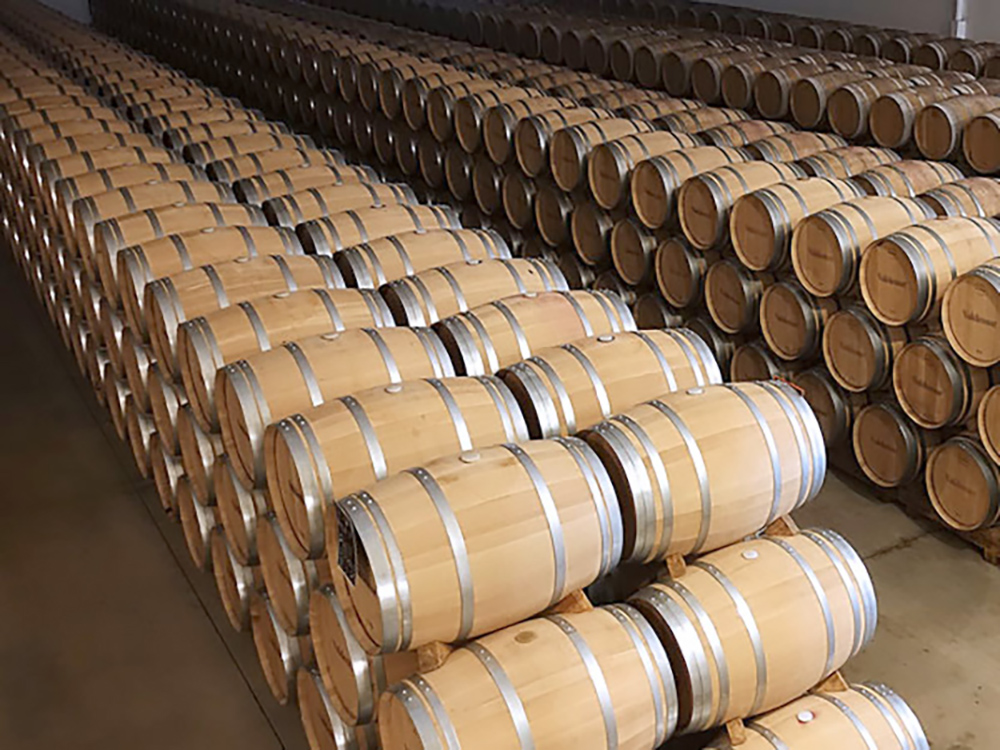By Michael Bray
In last week’s article, I discussed the importance of aging when it comes to wine, and highlighted the two most popular wine aging vessels: stainless steel tanks and oak barrels.
As a recap: stainless steel provides a neutral environment for fermenting and aging wine. If a winemaker desires to produce a crisp, fresh wine that showcases the essence of the soil and fruit, they will likely choose a stainless steel aging vessel. Oak, on the other hand, can be used to add an extra dimension of flavor and texture.
While some producers create unique wines with added spices and flavorings, most traditional winemakers only craft their wines with the essential ingredients of grapes and yeast. For these winemakers, oak barrels provide a highly finessed alternative to flavored additives.
The effects of oak aging will vary depending on the size of the barrel, the length of time the wine is aged, and the type of oak used.
American Oak vs. European Oak
When wine enthusiasts talk about American oak and European oak, they are referring to two distinct tree species. American white oak (Quercus alba) and European white oak (Quercus petrea) not only grow in different parts of the world, they also have several notable structural differences.
European oak is more dense, with its rings arranged closer together. This tight grain structure tends to impart softer, more subtle flavors to the developing wine. The looser structure of American oak, on the other hand, typically has a greater impact on the wine, contributing bolder, more aggressive flavors and offering a greater opportunity for oxygenation.
European oak is known for imparting soft aromas and flavors of spice, as well as a silky texture. This delicate touch is ideal for lighter wines, such as Chardonnay and Pinot Noir. American oak is known for imparting stronger impressions of vanilla, coconut, and wood, and its assertiveness is a good match for more robust, full-bodied wines like Cabernet Sauvignon and Tempranillo.
Taste the difference: Cune Rioja Crianza 2017 ($15.99), made from 100 percent Tempranillo grapes, sees a full year in American oak (the wood of choice for Spain’s Rioja region), and offers notable flavors of vanilla, toffee, and cocoa. Bodegas Breca Old Vines Garnacha 2019 ($15.99), aged for 18 months in French oak, is much more fruit-driven, marked by notes of ripe black fruit with touches of spice.
Other Oak Elements
In addition to the species of oak, the size and age of the barrel are important factors for the winemaker to consider. Smaller barrels allow for more contact between wine and wood, and so contribute a stronger oak flavor to the developing wine.
New barrels also impart a stronger, more distinctive oak presence. With each use (also known as “pass”), the barrel loses some of its assertiveness, and the softer the resulting flavors become.
If a winemaker is seeking a porous vessel that can slowly oxygenate and soften the wine without contributing noticeable oak flavors, they will likely choose to age in used (or “neutral”) oak barrels.
I hope this article helps to illuminate some of the decision-making that goes into aging wine.
As always, if you have any wine questions or stories to share, you can reach me via email at michael@passionvines.com
Drink passionately,
Michael
Michael Bray is the founder of and director of operations at Passion Vines Wine & Spirit Company in Somers Point and Egg Harbor Township. He serves on numerous local boards.






